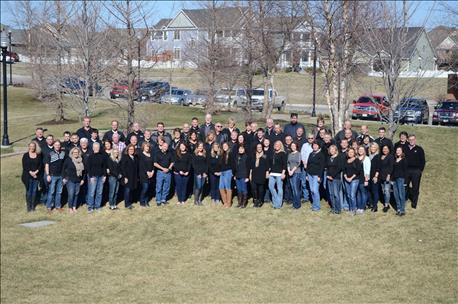
It's been just over a year since I slotted my first issue of Nebraska Farmer, and while I've probably got a lot to see and do before I'm considered a tried and true Nebraskan, the last year has been an adventure and a learning experience not only in Nebraska agriculture but in Nebraska traditions.
One of these long-standing Nebraska traditions is the Cattlemen's Ball of Nebraska. A year ago, I had the opportunity to attend my first Cattlemen's Ball at the Redbird Ranch along the banks of the Niobrara River in Boyd County, and witnessed some 5,000 Nebraskans coming together for a common cause.

COMMON CAUSE: Committee members for the 2016 Cattlemen's Ball of Nebraska, which will be held at the Lienetics Ranch near Princeton on June 3-4.
I attended my first Cattlemen's Ball as a journalist and spectator, but over the last nine months I've had the privilege of serving on the photography committee for the 2016 Cattlemen's Ball, which will take place at the Lienetics Ranch near Princeton on June3-4.
The primary goal of the Cattlemen's Ball, which has been held in a different part of Nebraska for the last 18 years, is to raise money for cancer research. While 90% of the funds raised go toward the Fred and Pamela Buffett Cancer Center, 10% are used to fund local health initiatives. Since 1998, the ball has raised around $13 million.
The Cattlemen's Ball brings together east and west, urban and rural, giving visitors a chance to experience a new part of rural Nebraska and a new piece of Nebraska agriculture each year. This year's event, being in the southeast part of the state, brings its own unique flavor, including a close proximity to the larger population centers in Nebraska, with the University of Nebraska-Lincoln and State Capitol nearby, as well as historic places like the Homestead National Monument. This year's ball also gives a close-up look at the beginning of the beef value chain, taking place on Trevor and Torri Lienemann's commercial cow-calf and seedstock operation.
But it's also something that takes a lot of planning ahead, considering all of the amenities and infrastructure needed to organize an event for 5,000 people. With 45 separate committees, and several volunteers involved in each committee, putting together an event of this magnitude takes coordination – for example, the photography committee (including yours truly) works closely with the social media and publicity committees. Meanwhile, almost all committees work together to coordinate schedules for the event itself.
It's the cause that brings everyone together. As one of the chairmen of this year's event put it to me this spring, it's about the people you meet and the stories they tell about what motivates them. Not all are from an ag background, but everyone, especially in Nebraska, is closely linked to agriculture. And cancer is something that affects everyone. Whether it's a close friend or family member, distant relative, or co-worker, chances are you probably know someone who has been affected by cancer in their lifetime.
While I'd be hard-pressed to say my contribution compares to the amount of time and effort devoted by other committee members, the Cattlemen's Ball is a Nebraska tradition I'm proud to have become a part of.
About the Author(s)
You May Also Like






